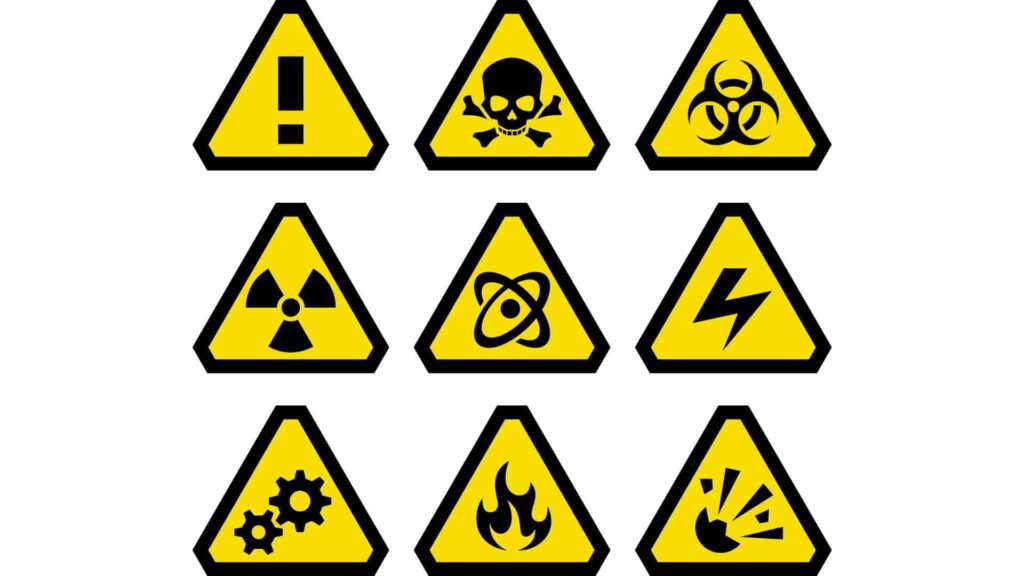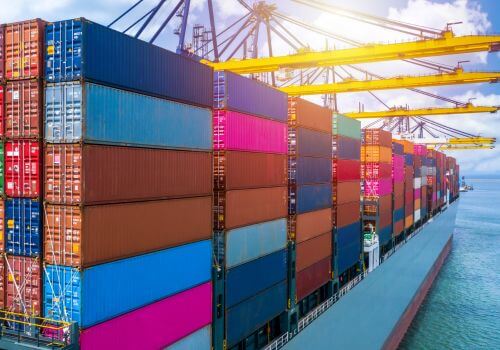Hazmat safety, short for hazardous materials safety, is all about handling potentially risky substances with care. Think of chemicals, gases, or flammable liquids that, if not managed properly, could pose threats to our health, safety, and the environment. These materials require special attention during handling, storage, and transportation to keep everyone in the surroundings safe.
In this blog, we’ll break down the fundamentals of Hazmat safety and compliance, covering everything from the basics of classification and labeling to the importance of proper documentation and emergency response procedures.
Understanding HAZMAT in Logistics
Hazmat or Hazardous Materials includes a variety of materials, ranging from chemicals and gases to flammable liquids. These materials require special care in handling and transportation to prevent accidents and protect those involved in the logistics process.
Improper handling of Hazmat can lead to spills, fires, and other accidents with potential risks to both people and the environment. In fact, research suggests that the most common hazmat transportation accidents involve gas (17.79%), flammable liquid (56.07%), and corrosive substance (12.28%). That’s why it’s crucial for logistics experts to be aware of these risks, follow safety guidelines, and stay informed about hazardous material handling regulations.
Let’s break down some common categories of Hazmat you might encounter in the industry:
- Chemicals
Chemicals, ranging from corrosive substances to toxic materials, are frequently transported in the logistics industry. Examples include acids, solvents, and industrial cleaning agents.
- Gases
Gases, both flammable and non-flammable, pose unique challenges during transportation. This category includes propane, hydrogen, and compressed gases.
- Flammable Liquids
Flammable liquids, such as gasoline, ethanol, and certain industrial oils, are commonly moved through logistics channels. These materials require specialized handling to prevent combustion and reduce the risk of fires during transportation.
- Biological Hazards
In some instances, logistics may involve the transport of biological materials, including medical waste or certain infectious substances.

Essential HAZMAT Safety and Compliance Components
Transporting hazardous materials demands a solid checklist to guarantee safety and compliance without any unnecessary fuss. Here are the essential must-haves for Hazmat transportation:
- Proper Training and Certification
In-depth training is crucial, covering not only the basics of Hazmat handling but also specific nuances related to different materials. Certifications should align with regulatory requirements, ensuring that everyone involved is well-versed in the safe handling, emergency response, and documentation associated with hazardous materials.
- Comprehensive Documentation
Documentation isn’t just paperwork for the sake of bureaucracy; it’s a meticulous record-keeping system. Accurate and detailed documentation includes shipping papers, manifests, and emergency response information. This ensures that everyone involved in the logistics chain is aware of what’s being transported and how to respond if needed.
- Correct Packaging and Labeling
Precision is key here. Packaging must meet strict safety compliance standards to contain potential leaks or spills. Proper labeling isn’t just paperwork – it’s a vital communication tool for everyone in the logistics chain. It informs emergency responders, warehouse personnel, and transporters about the nature of the materials being transported.
- Emergency Response Plan
The emergency response plan needs to be tailored to the specific types of Hazmat being transported and the potential risks involved. Regular drills and scenario-based training make sure that everyone is ready to act swiftly and effectively in a real-life situation.
When you partner with Logos Logistics, we can guarantee that all of the above compliances will be satisfied so your shipment reaches its customers on time!
How to Qualify as a HAZMAT Carrier?
Qualifying as a Hazmat carrier involves meeting specific regulatory requirements and adhering to safety standards to ensure the secure transportation of hazardous materials. Here’s a step-by-step guide on how to qualify:
- Understand Hazmat Regulations
Familiarize yourself with the hazardous materials transportation regulations in your region. In the United States, for example, the OSHA requirements for Hazmat provide guidelines for the safe transportation of hazardous materials.
- Obtain a USDOT Number
If you are operating in the United States, you’ll need a USDOT (United States Department of Transportation) number. This is a unique identifier issued by the Federal Motor Carrier Safety Administration (FMCSA). You can register for a USDOT number through the FMCSA’s online registration system.
- Complete the Hazmat Registration
If your Hazmat shipments cross international borders or involve interstate commerce in the United States, you may need to register for a Hazardous Materials Safety Permit (HMSP) in addition to the USDOT number. This is a requirement for carriers transporting certain types and quantities of hazardous materials.
- Designate a Hazmat Coordinator
Appoint a designated Hazmat coordinator within your organization. This individual should be knowledgeable about Hazmat regulations and will be responsible for overseeing compliance, Hazmat training essentials, and emergency response procedures.
- Obtain the Necessary Permits
Check for any additional permits required for transporting specific types of hazardous materials. Some materials may require additional endorsements or permits beyond the general Hazmat requirements.
According to FMCSA, logistics carriers will be required to:
- Ensure a satisfactory safety rating for obtaining and holding a safety permit.
- Keep crash, driver, vehicle, hazardous materials, or out-of-service ratings above the worst 30 percent national average per FMCSA’s Motor Carrier Management Information System (MCMIS).
- Have a satisfactory security program according to 49 CFR Part 172, Subpart I, and provide associated training (49 CFR 172.704(a)(4) & (a)(5)).
- Maintain registration with the Pipeline and Hazardous Materials Safety Administration (PHMSA).
- Establish a reliable communication system enabling operators to contact the motor carrier during transportation and maintain communication records.
- Develop written route plans for radioactive materials (49 CFR 397.101) and explosives (Part 397.19)/
- Perform a pre-trip inspection, following the North American Standard (NAS) Level VI Inspection Program for Radioactive Shipments for Class 7 (radioactive) materials.

Conclusion
As we step into 2024, the need for Hazmat safety and compliance has never been more critical. The world is evolving, and with it, the landscape of transportation and logistics is transforming at an unprecedented pace.
Moreover, in a technologically advanced age, information travels at the speed of light. A single Hazmat incident can become a global headline, impacting not only the reputation of the entities involved but also influencing public perception of the entire industry. The need for airtight Hazmat safety protocols is not just about legality; it’s about safeguarding the integrity of the industry.
The road to excellence begins here. Let’s pioneer a new era of Hazmat safety together. Connect with Logos Logistics – where safety isn’t just a practice; it’s a promise.










